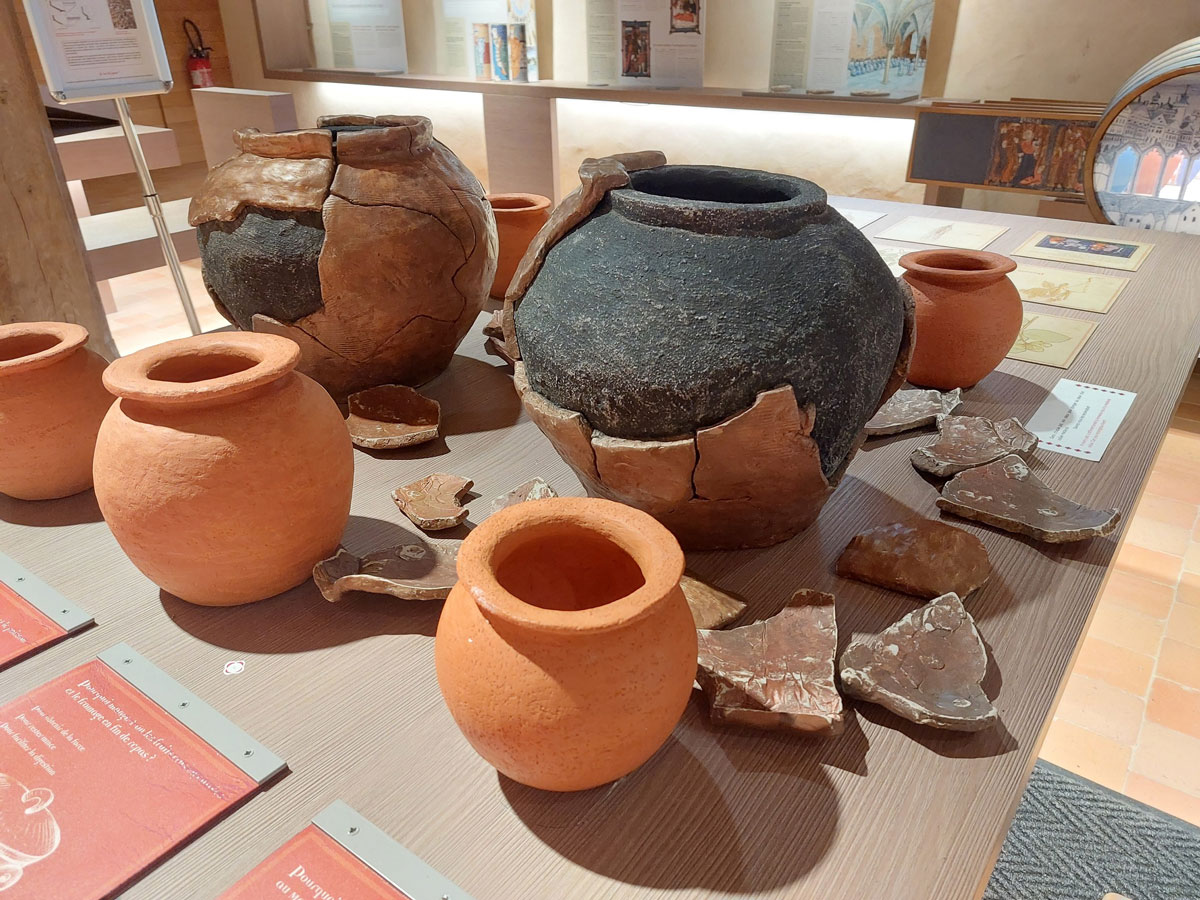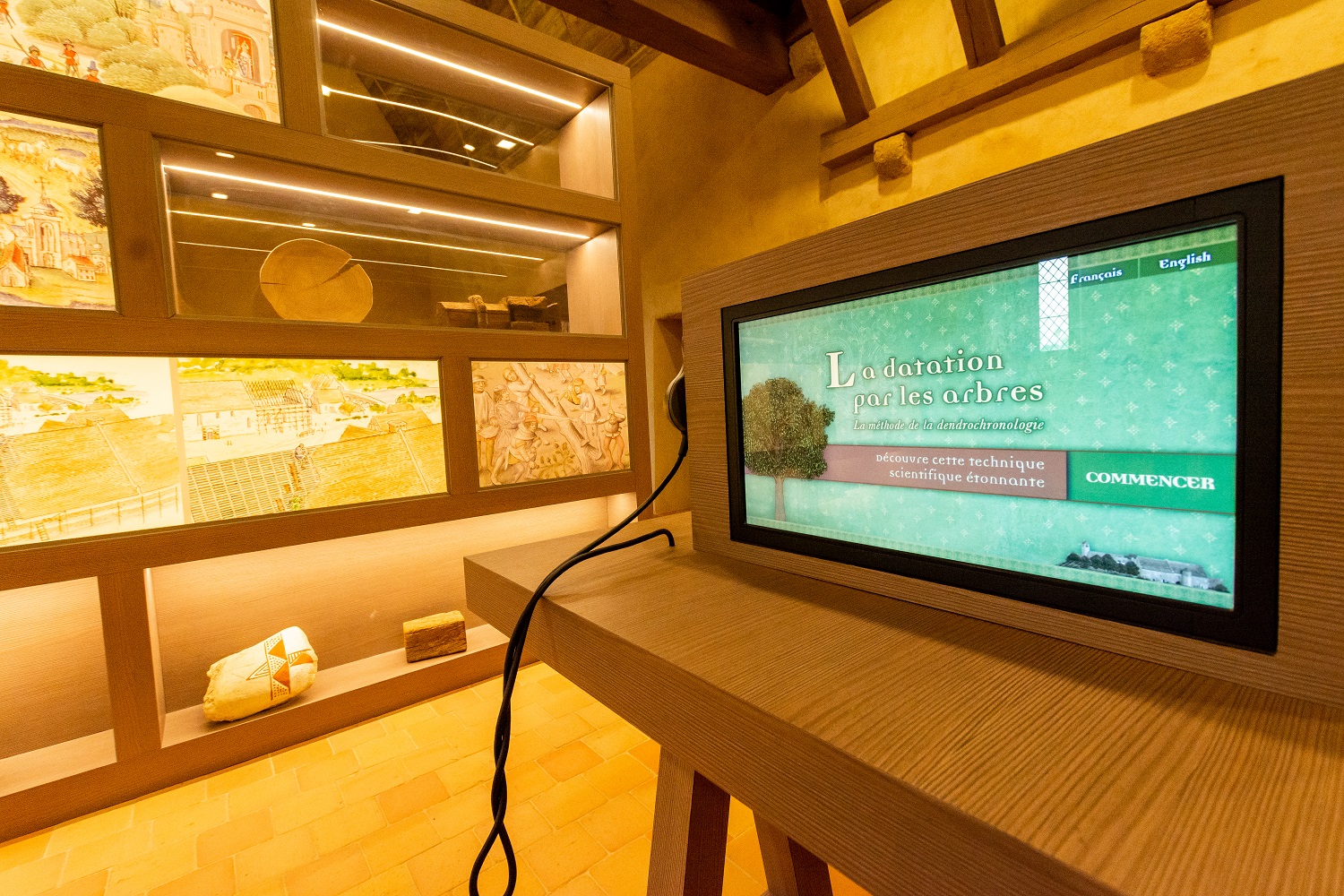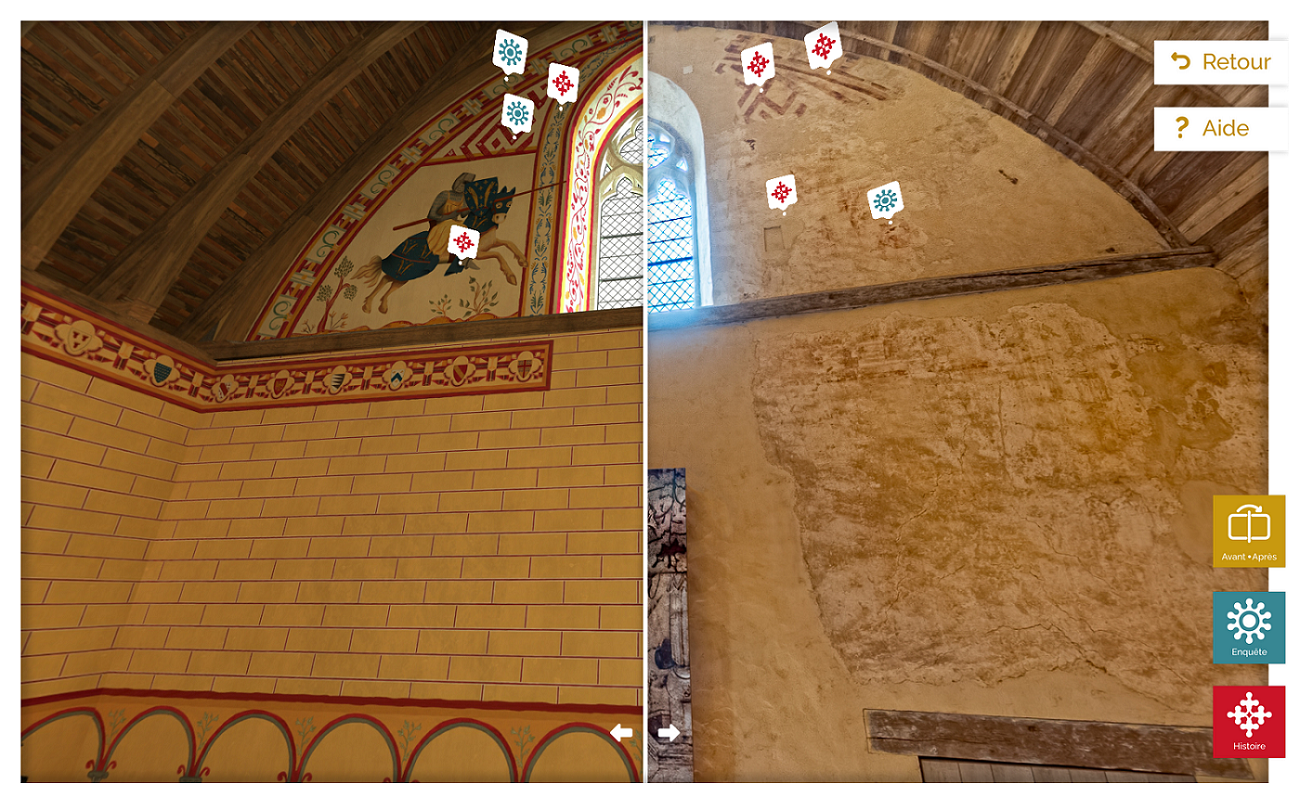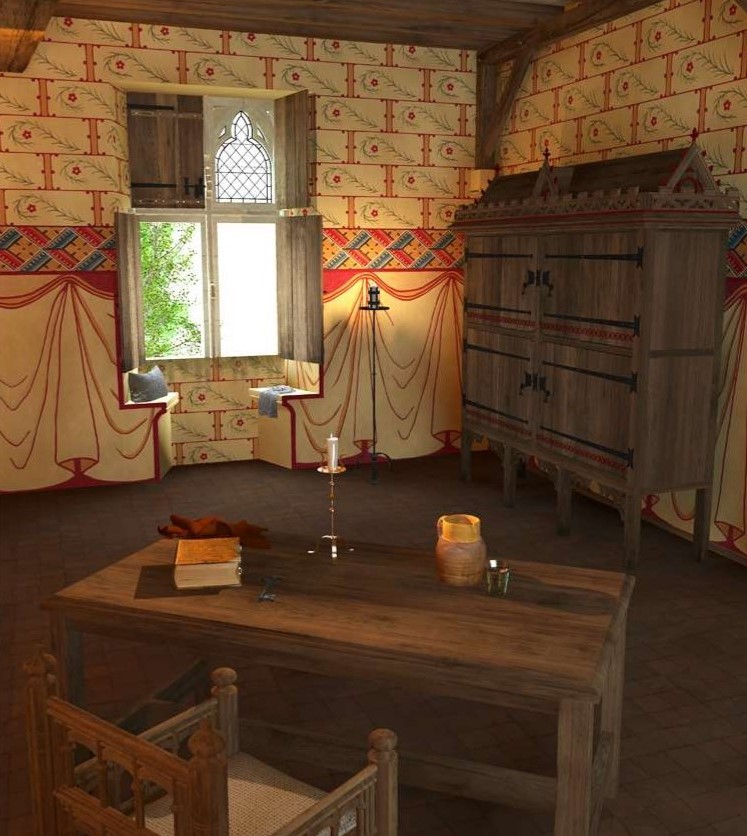DISCOVER THE MANOIR DE LA COUR PERMANENT EXHIBITION
An exceptional building to grasp the medieval era
As well as the impressive late 13th-century architecture of this building, the 300m² exhibition space displays the historic and archaeological findings – all translated into English – that have made the Manoir de la Cour one of the most well-known monuments of this era.
From Prehistoric times to the Middle Ages
Come and discover an exhibition that begins in the lords of the manor’s former storehouse, and then leads you on a journey through the history of the Vègre region, from the first ever human occupation up until the Middle Ages.
Then, you’ll be going upstairs to the seigniorial private quarters, where you’ll see some of the original comforts such as the latrine, window seats and fireplaces. You’ll learn all about the history of this building and its uses over the years, its architecture, decoration and everyday life in the Middle Ages.
An experience into the heart of a medieval fiefdom
To make the latest historic research findings available to the general public, the permanent exhibition features varied modules, with something for everyone, from young children to fans of history, heritage and archaeology.
-
AN INTERACTIVE EXHIBITION
There’s a game on a big touch screen where you’ll be following a typical day in the lives of the lords of Asnières and the canons of Le Mans in the Middle Ages.
The research studies carried out on the medieval building and restoration work are presented using scale models, videos, presentations and interviews with varied content.
-
RECREATED CEREMONIAL ROOM
The magnificent ‘Salle des Plaids’, a ceremonial room where the lords of Asnières would exercise their power, has been recreated so visitors can see the original layout, uses and decoration as it would have been in 1300.









